✨ Welcome to Singapore Noodles, a newsletter dedicated to celebrating Asian culinary traditions and food cultures. Every Monday, you’ll be receiving a tasty mix of food history, stories, and recipes straight in your inbox. Archived recipes and other content can be found on the index. This newsletter is 100% reader-funded; each paid subscription supports the writing and research that goes into the newsletter, pays guest-writers, and gives you access to all content and recipes. Thank you for being here and enjoy this week’s post. - Pamelia ✨
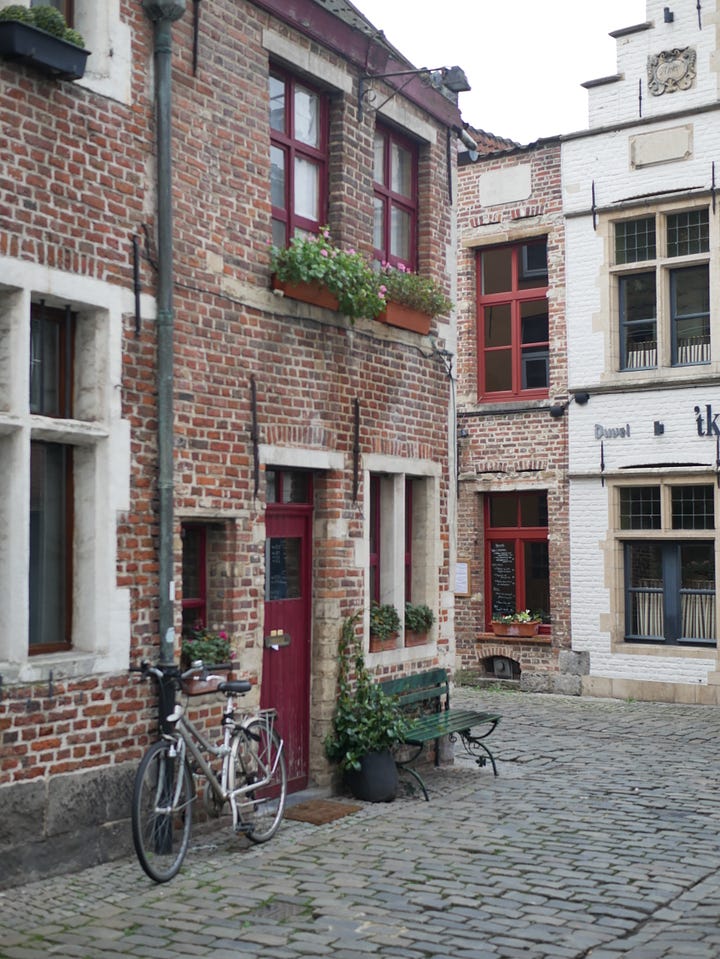
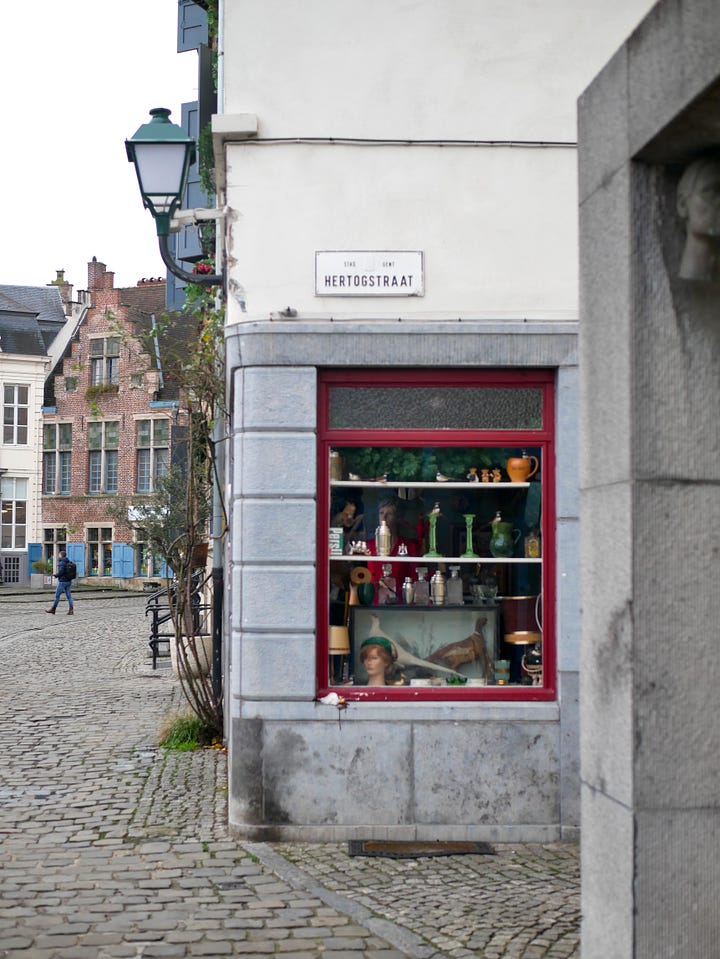
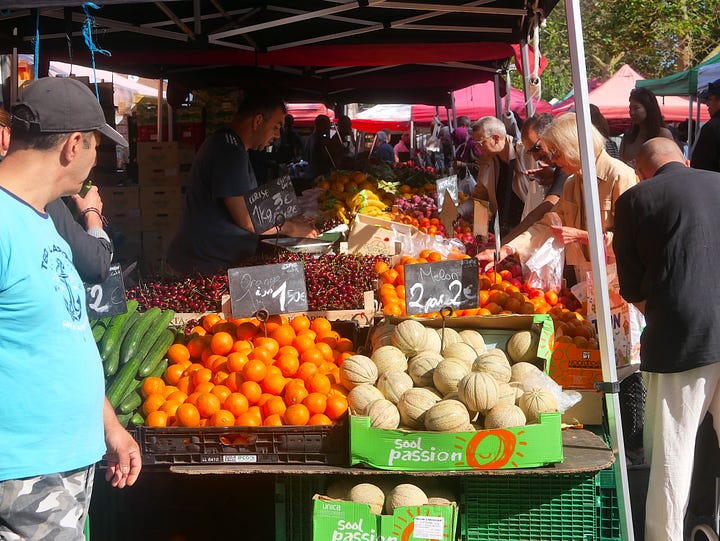
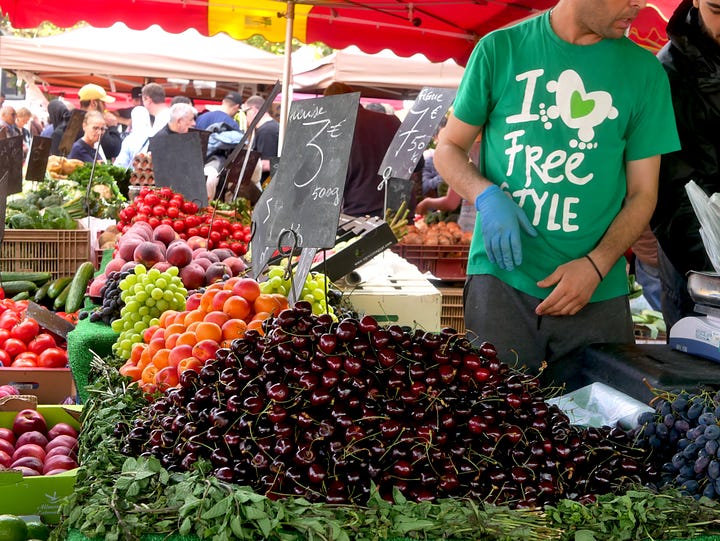
It’s beautiful this time of the year in Europe. Living in Breda — a city close to the the Belgian border in the Netherlands — we’ve been making the most of summer by making short trips to Antwerp and, more recently, Lille, a city positioned near the France-Belgium border. It’s still incredible to me that a passport is not even required when driving between these countries.
Last weekend, the temperature in the day soared to a high of 31°C and it was almost like we were back in Singapore. Singaporean friends had invited us for a barbecue and asked if we could bring pandan chiffon cake. It’s a beloved cake amongst not only Singaporeans, but also others in Asia where the long aromatic blades grow prolifically. Chiffon cakes are as American as can be, but I suppose it’s perceived as a little retro these days. Not in Asia though, and I imagine that a big part of the chiffon cake’s enduring appeal in the tropics lies in its texture, being so cloud-like that it doesn’t weigh you down in warm weather. I asked my friends if they have ever tasted homemade pandan chiffon cake, because it exists on a separate plane from the ones that you get from your usual bakery or confectionery. It truly lives up to the fluffy connotations implied by its name and, being made with freshly juiced pandan rather than neon pandan extract, is far more aromatic. One follower who made the cake following the recipe that I’d previously posted was stunned at how expressive the cake was of the leaves: “more pandan than pandan itself!”
Frankly, pandan chiffon cake needs no adornment — no fruit coulis, no dollop of whipped cream, not even a light shower of icing sugar. We love it so much as is that when I told Wex of my intentions to turn it into a layered creation, he asked, incredulous, “Why would you want to do that? Why would you want to mess with a good thing?”
As much as I agree with him, given that there’d be six of us present at the barbecue and the only chiffon cake tin that I have is 6-inch-wide, making a layer cake seemed like a sensible way to get more serves. Incidentally, chiffon cake is wonderful in a layer cake. The crucial point of difference here is that their surreal fluffiness is created by beating egg whites rather than creaming butter, allowing for the use of oil as the core fat. Butter turns solid when chilled, but oil remains a liquid at cool temperatures, thus keeping chiffon cakes soft even when they are refrigerated.
There are several ways one can spruce up a pandan layer cake. One, sometimes known as “pandan kaya layer cake”, looks like a layer cake made in the Western tradition, but is in fact distinctly Asian. The layers are suspended in what resembles pandan mousse, but a closer inspection of the recipe reveals that it is in fact more of a gel, having been thickened with mung bean starch and set with the barest bit of agar powder, ostensibly to accentuate the heat-beating qualities of the cake.
There’s also another type of pandan layer cake that has become rather popular in Singapore in recent years: the ondeh ondeh cake. Also known as klepon to the Indonesians, ondeh ondeh is a classic in the pantheon of Singaporean desserts. Each round, bite-size dumpling encloses a generous amount of shaved gula melaka, which melts into liquid when the dumpling is lowered into simmering water. The star of an ondeh ondeh cake is its filling: grated coconut tossed in thick, melted palm sugar. The cake is then frosted all over with whipped cream and more coconut is pressed into the frosting so that the cake adopts a shaggy, snowball-like appearance, thus bringing to mind the cake’s source of inspiration.
This style of pandan layer cake is more approachable in my opinion, not requiring the procurement of hard-to-find ingredients such as mung bean starch or long set times. The only trouble is the propensity for whipped cream to weep, soften, or melt in the heat. This is an easy problem to solve, luckily; when I was younger and into cake-baking, I reached for thickened cream to mitigate mishaps. But now, mascarpone is a far better choice in my view. It’s neutral in flavour compared to cream cheese, while providing the same body. To this, I add a hint of icing sugar (the coconut filling provides enough sweetness) and the barest trickle of coconut cream to echo the filling. For the final decoration, I deviated from the usual look of the ondeh ondeh cake with more palm sugar-coconut mixture around the circumference of the cake.
The cake held up surprisingly well, considering that it sat on my lap throughout the hour-long car ride, withstanding many swerves of the road and the sun pouring in through the windows. It sat in the refrigerator as we enjoyed the barbecue. Afterwards, we brought the cake up to the rooftop and ate fat slices of cake as the sun set. It was a beautiful moment, with parakeets flying and the sun dipping in the distance like a glowing red yolk. Everyone was so stuffed by the end of the night and our friends were leaving for Germany the next day, so we took the leftovers home and had them for breakfast the next day. I can report that the cake keeps well in the refrigerator.

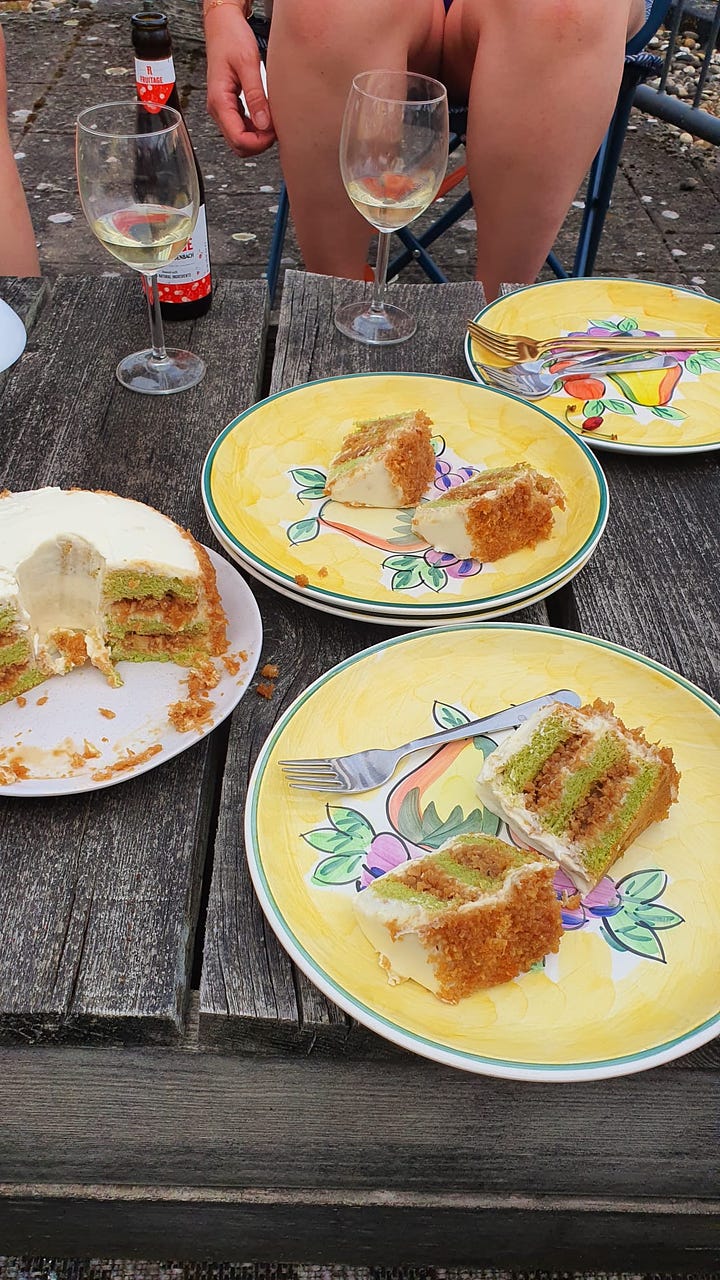
🥦 My second cookbook Plantasia: A Vegetarian Cookbook Through Asia leverages Asia’s techniques and flavour combinations to expand your repertoire of vegetable dishes deliciously beyond Western-style salads. Pick up your copy here or find a stockist near you. It is mostly vegan (or easily veganised), with plenty of allium-free options.
Pandan Layer Cake
Makes a 6-inch cake (about 8 to 10 servings)
150g gula melaka or other dark palm sugar (roughly chopped)
120ml water
3 pandan leaves (knotted)
1/4 teaspoon fine sea salt
250g grated coconut (fresh or frozen and thawed)
420g mascarpone
50g coconut cream
15g icing sugar
Pandan chiffon cake (cooled completely)
Begin by making the coconut filling. Combine 150g gula melaka or other dark palm sugar (roughly chopped), 240ml water, 3 pandan leaves (knotted), and 1/4 teaspoon fine sea salt in a saucepan. Set it over medium heat and cook, stirring occasionally, until the gula melaka melts completely.
Remove the pandan leaves and discard. Add 250g grated coconut (fresh or frozen and thawed) to the pan and toss well to coat it in the sugar syrup. Cook over low heat until the coconut does not leach water when you tilt the pan. This mixture should taste delicious enough to eat on its own and should be relatively dry so that it does not turn the cake soggy. Set aside to cool completely.
Meanwhile, for the frosting, mix 420g mascarpone, 50g coconut cream, and 15g icing sugar in a bowl. Taste and add more icing sugar if you wish, but bear in mind that the grated coconut is going to impart a lot of sweetness to the cake. Place the bowl in the refrigerator to keep the frosting well-chilled.
When the coconut filling has cooled to room temperature and the frosting is well-chilled, assemble the cake. Split the pandan chiffon cake (cooled completely) horizontally into three layers with a serrated knife. Place one layer of the cake on a plate or small cutting board. Slather on enough frosting to coat it, then evenly spoon over one third of the coconut filling. Top with another layer of cake and repeat this process. Top with the third layer of cake and cover the cake all over with the rest of the frosting.
Place the remaining one third of coconut filling in a fine sieve and press down with a spoon over a sink to remove excess moisture. With your hands, press the coconut around the circumference of the cake. Slide a big offset spatula under the cake and transfer it onto a clean platter or plate. Eat immediately or place the cake in the refrigerator for up to 2 days.

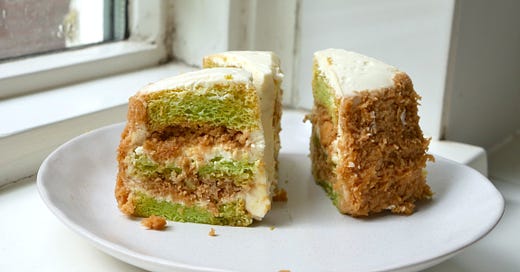


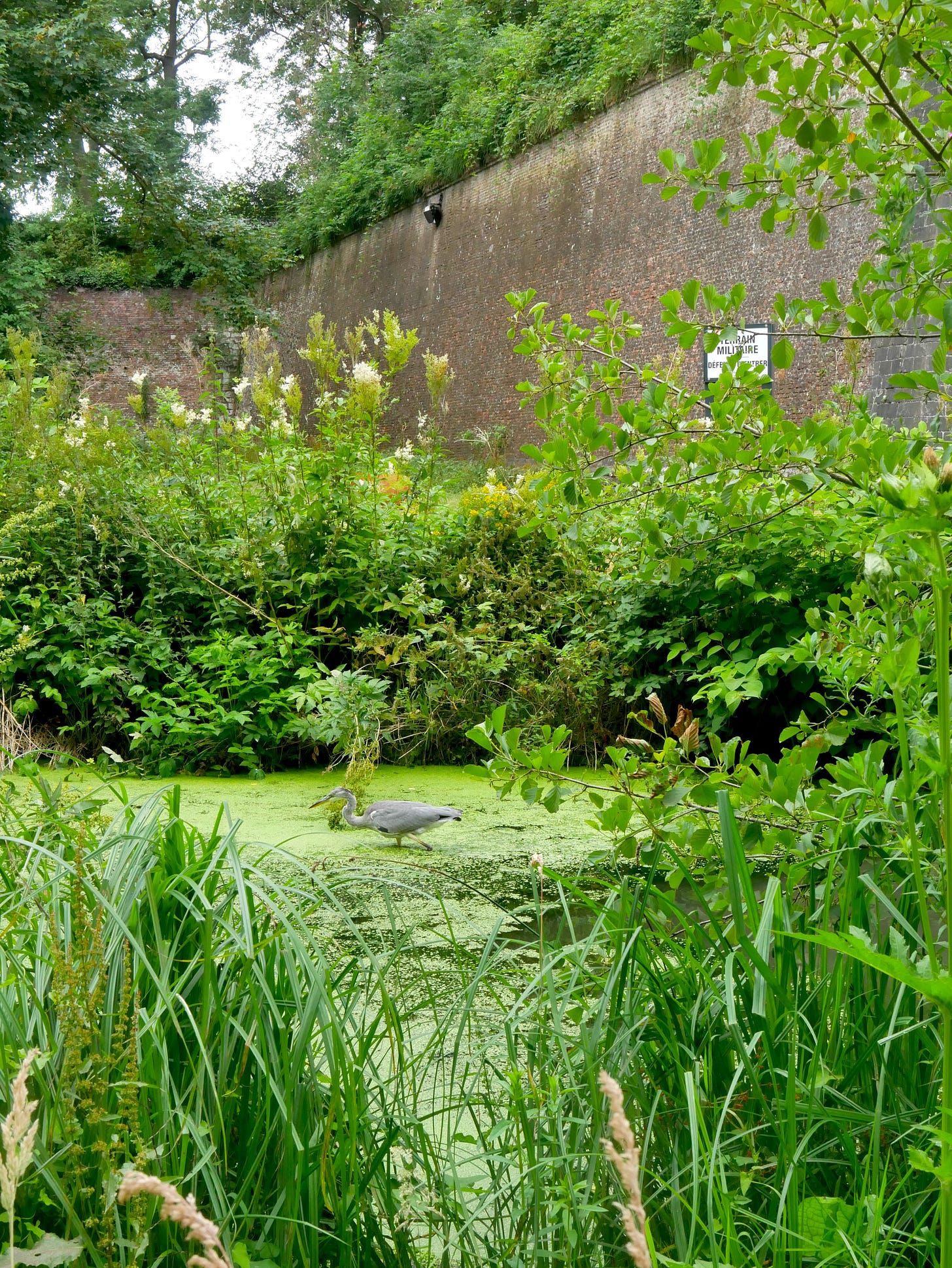
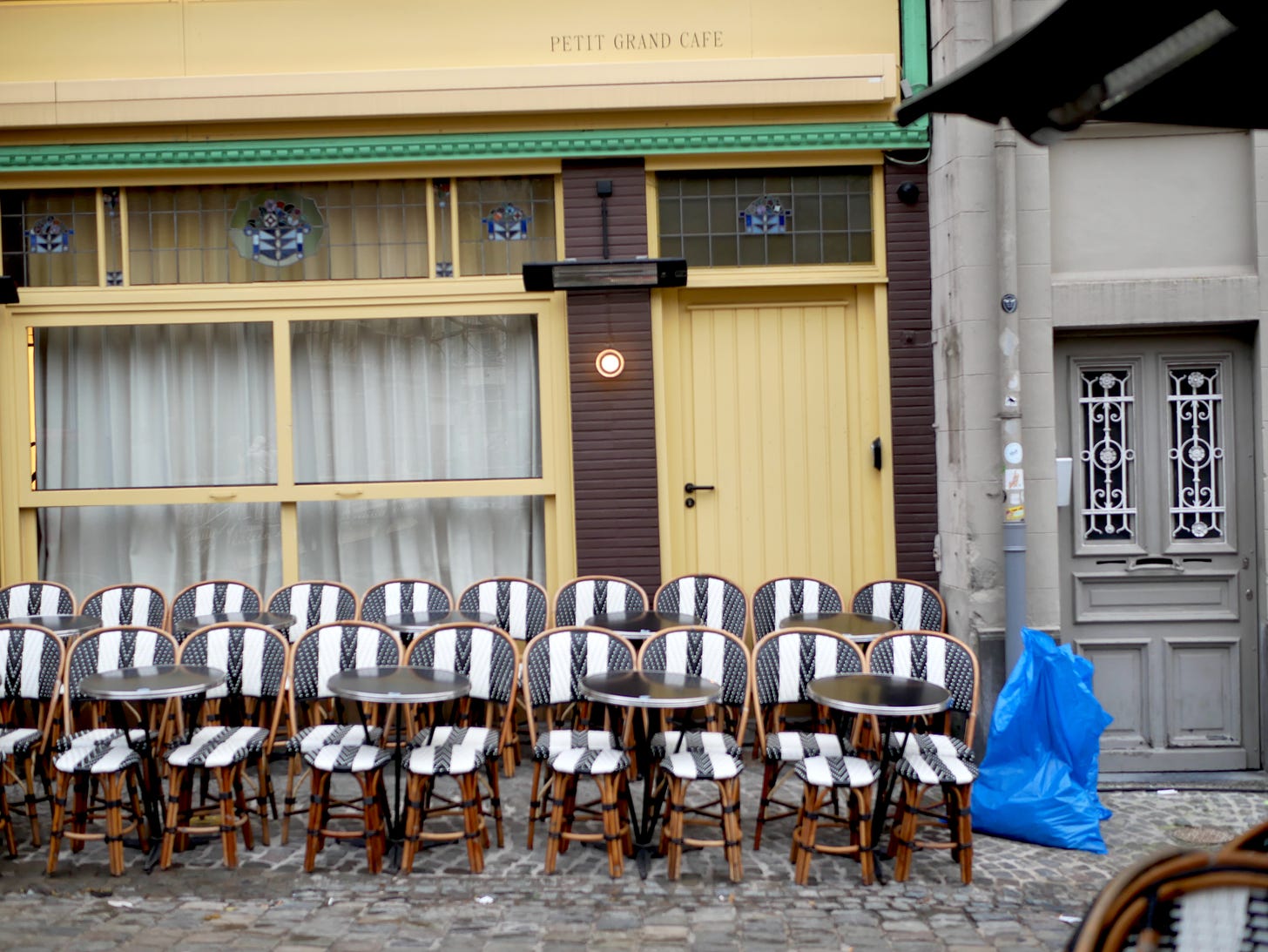
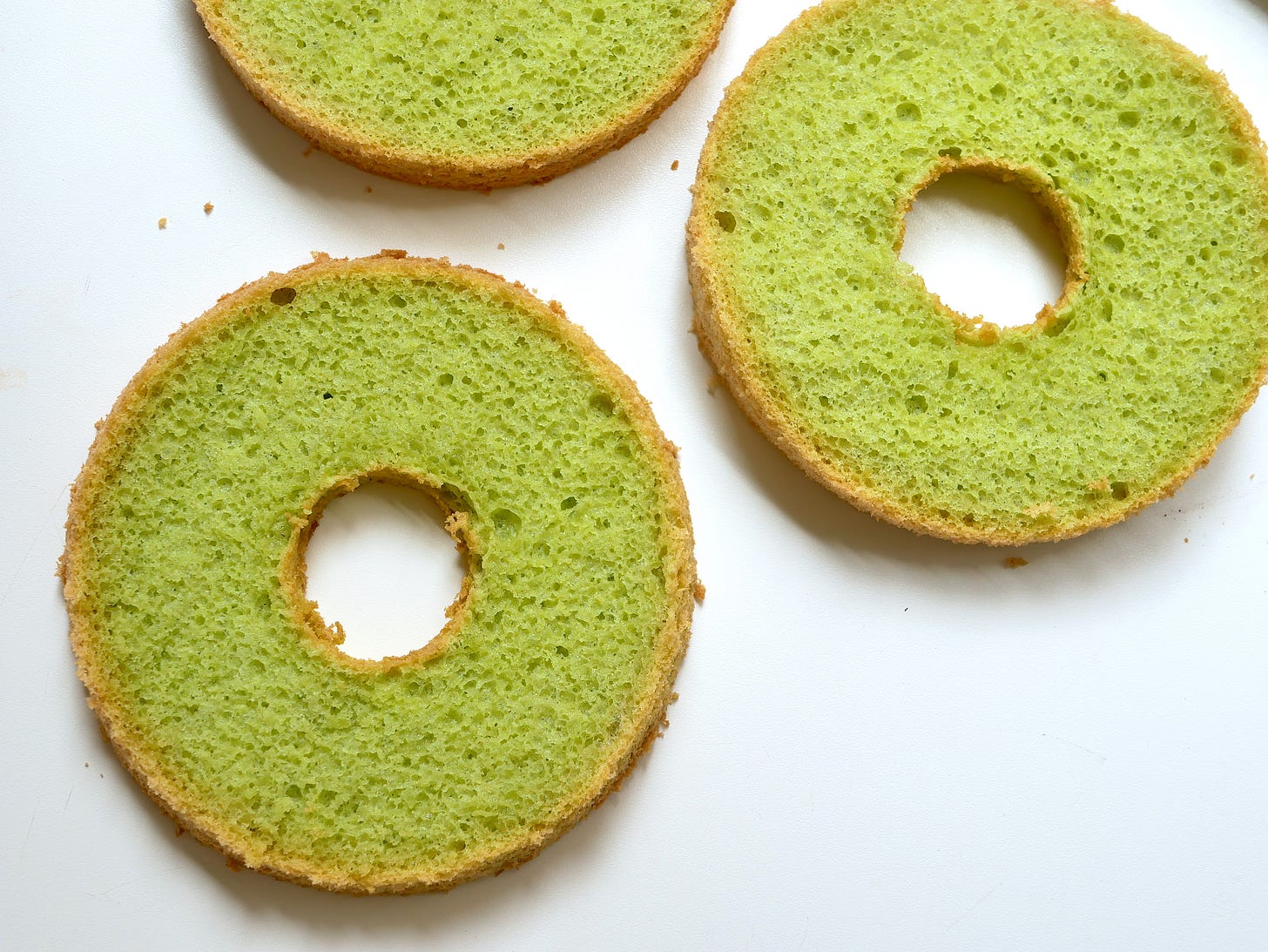
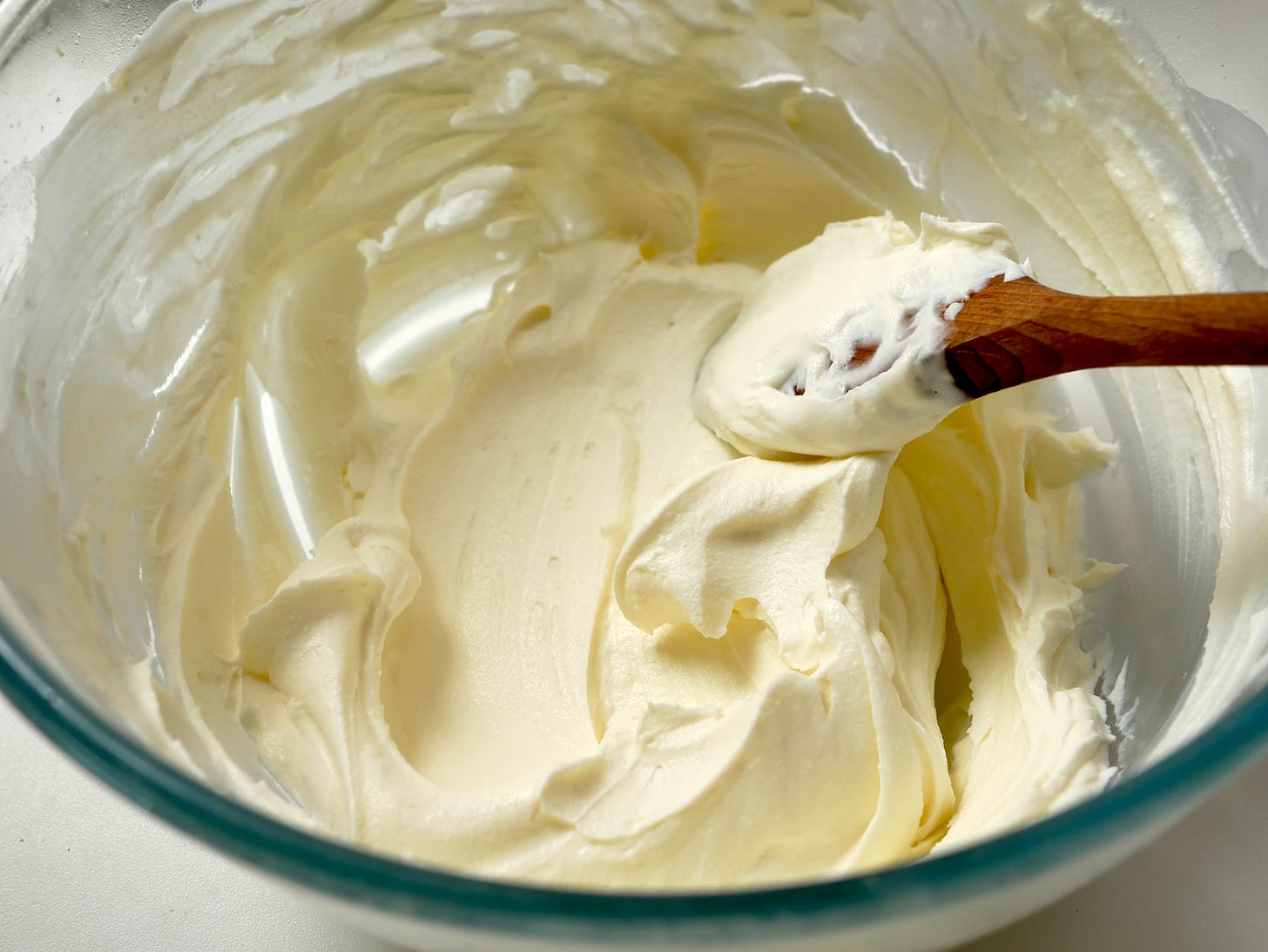
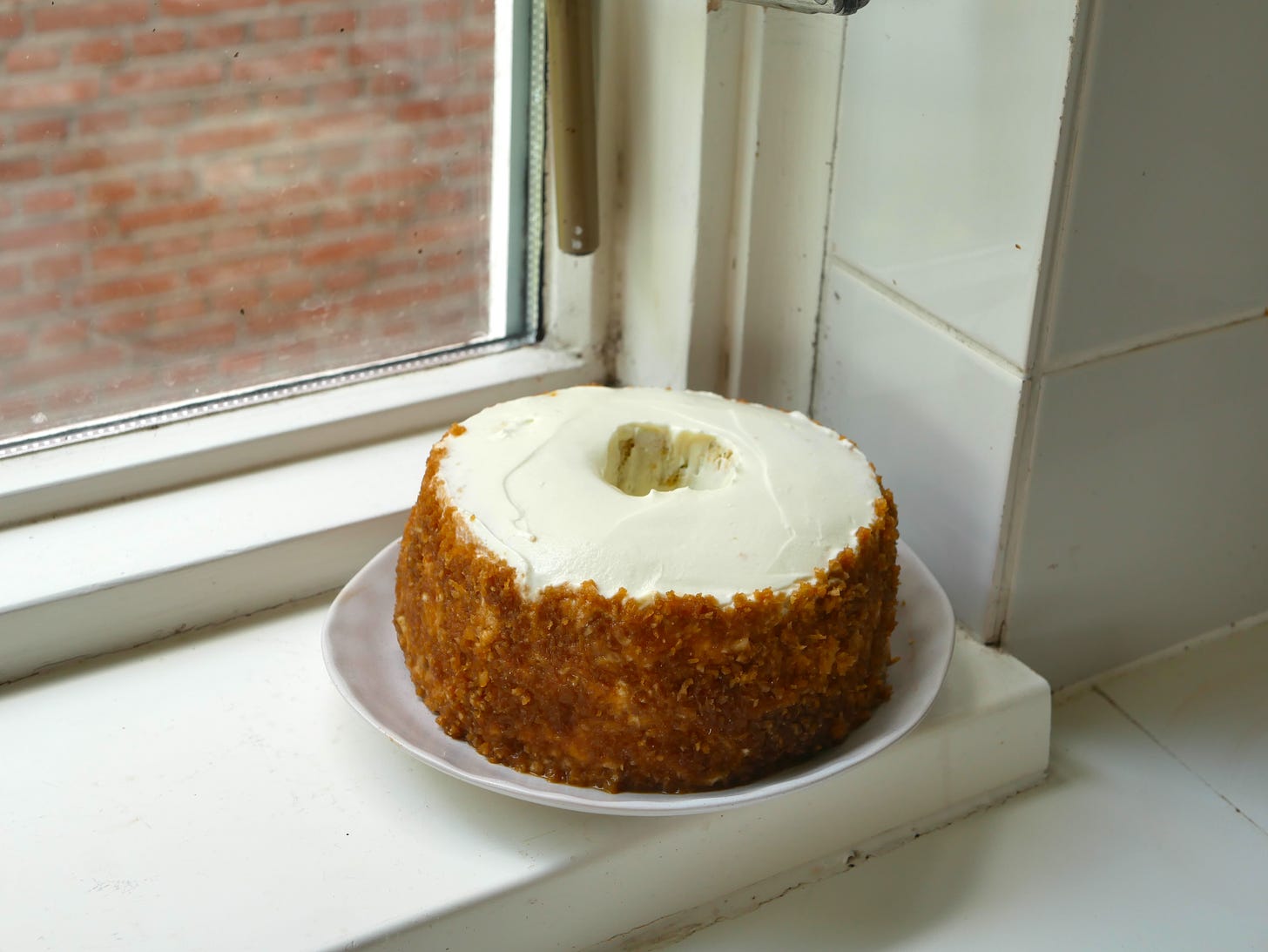

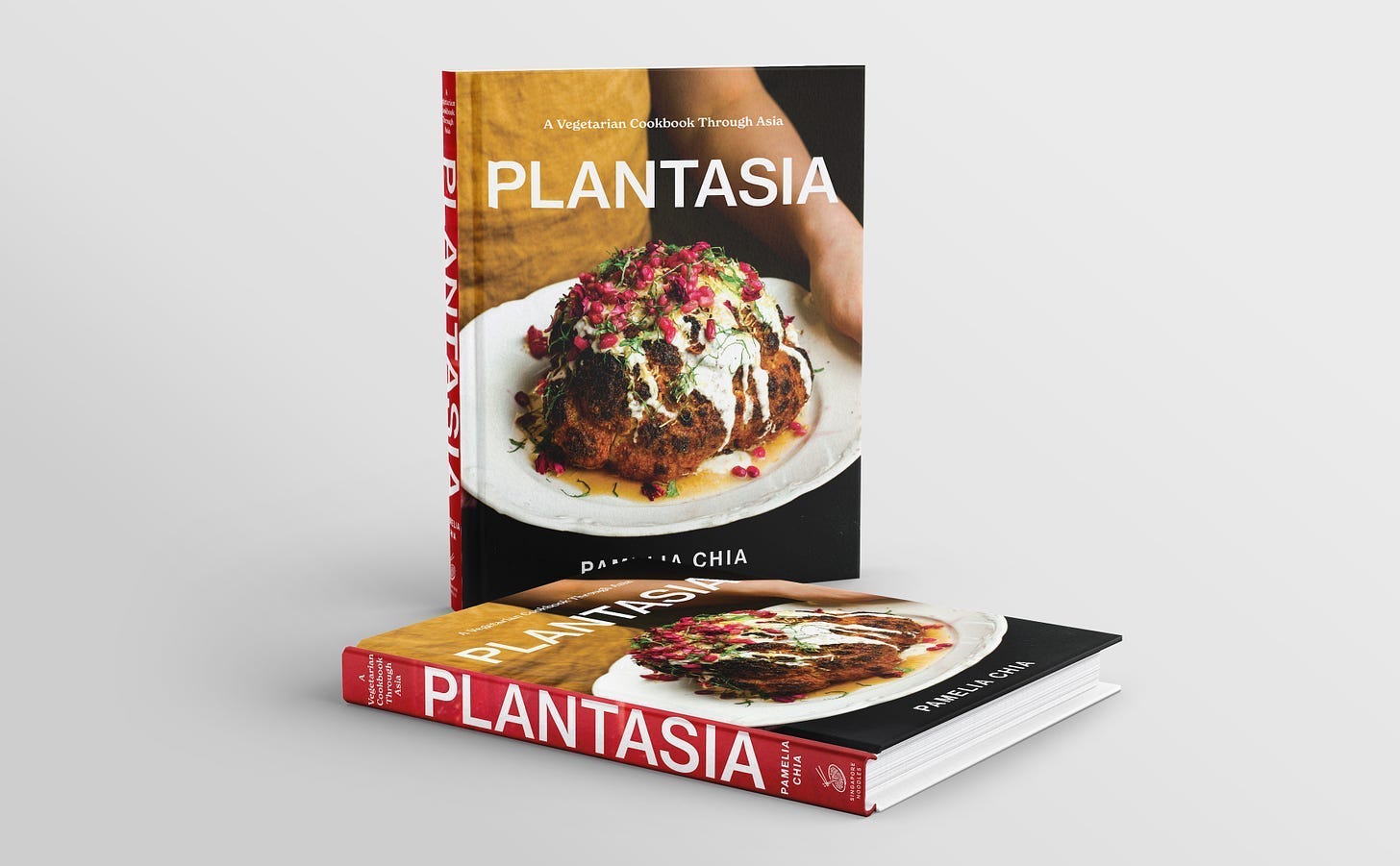
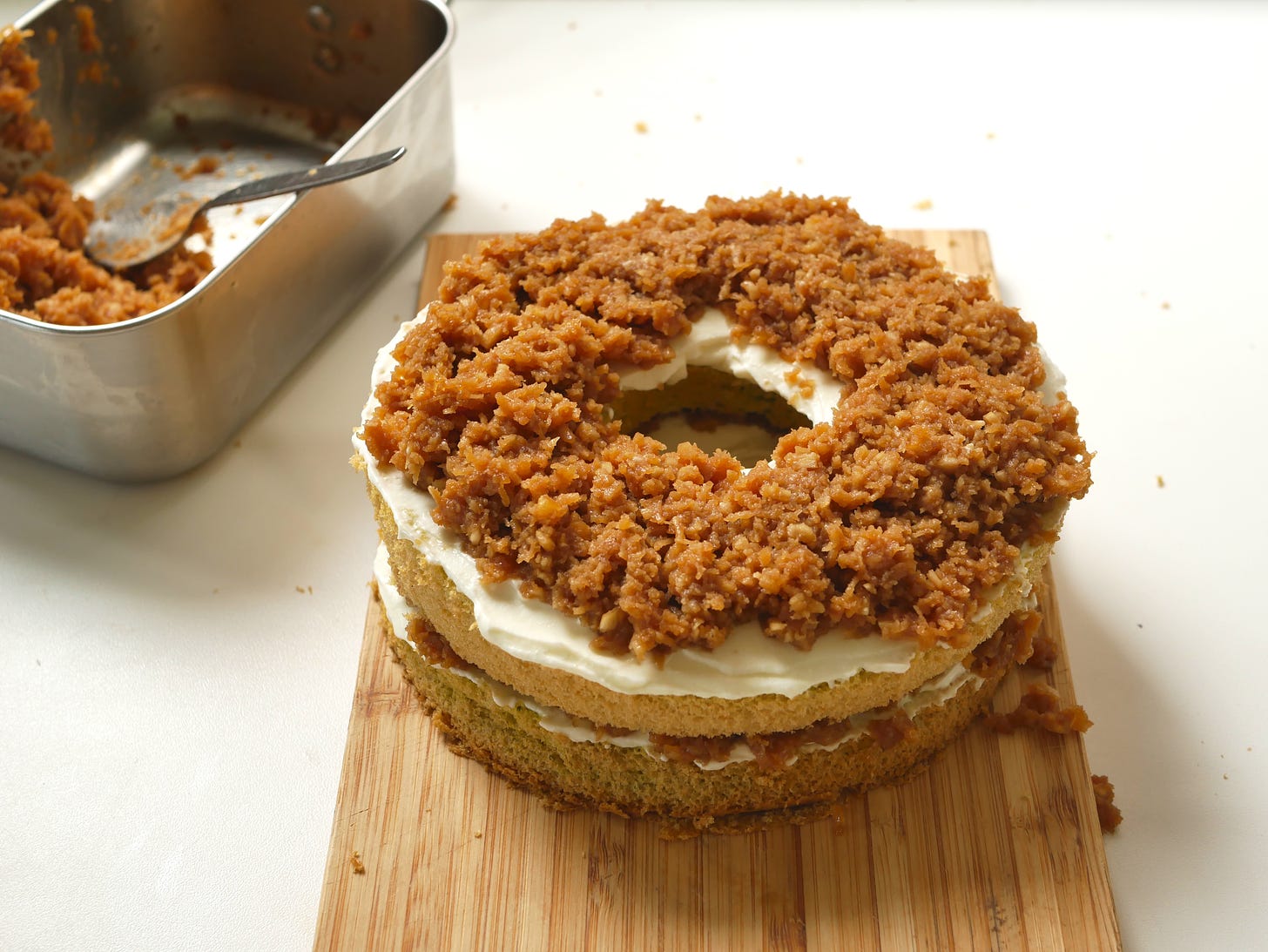
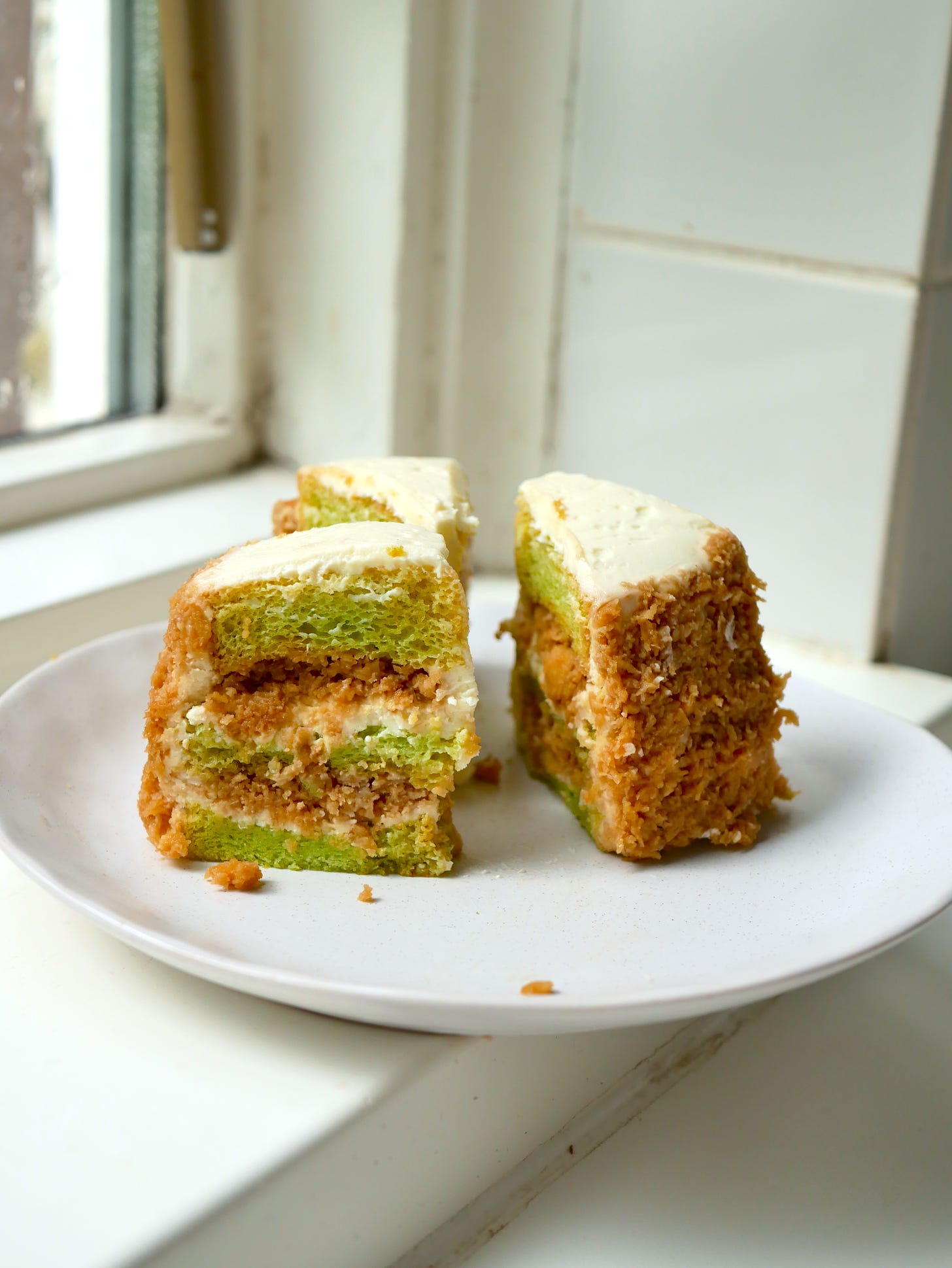
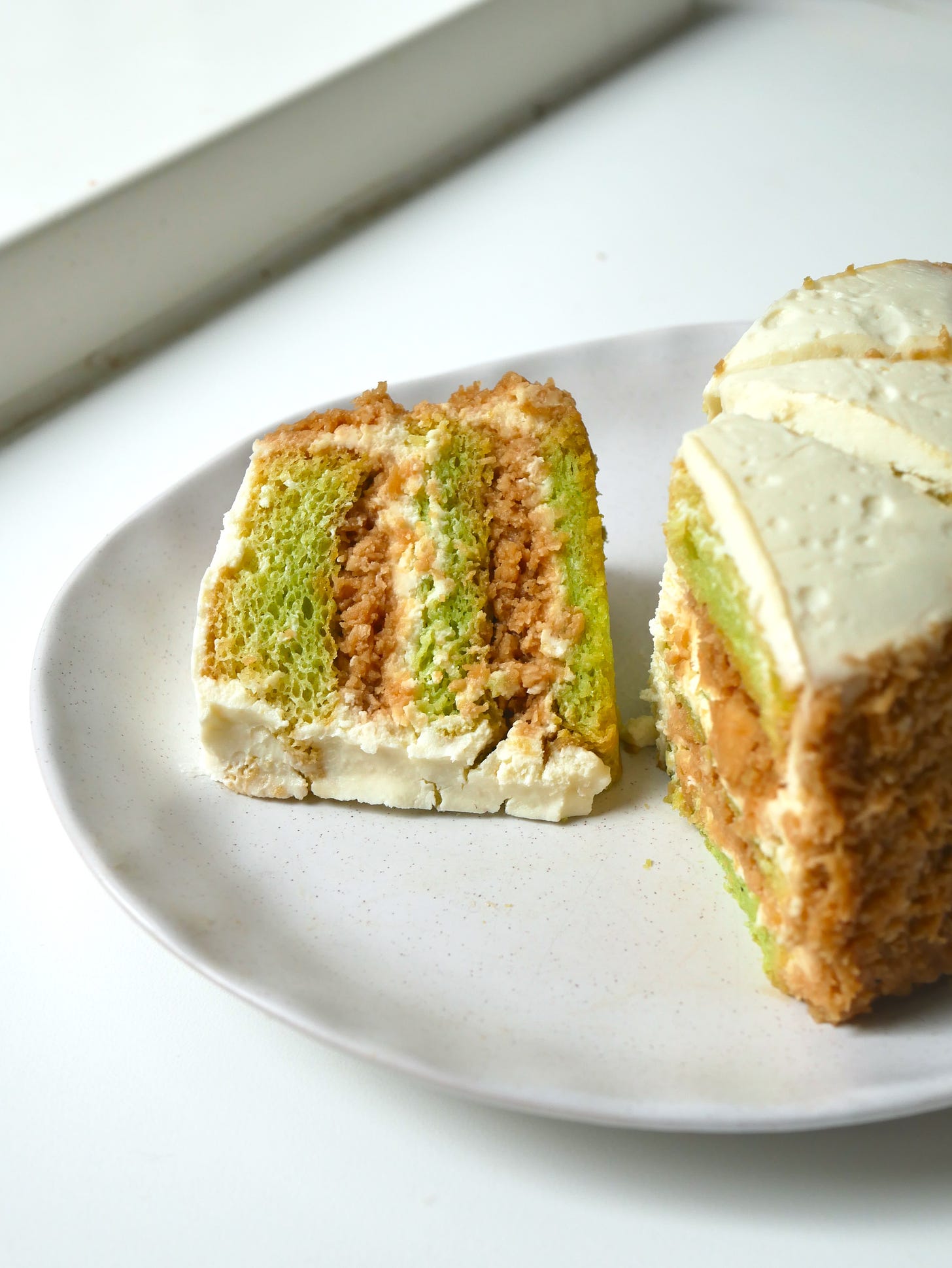
Hi Pamelia Thanks for sharing this recipe. May I know how the sweetness like? It is on the sweet side
Thanks for sharing this, Pamelia, it looks lovely. Do you have any ideas or suggestions for a dairy-free version? I want to make something similar but cannot tolerate cheese. Thanks!